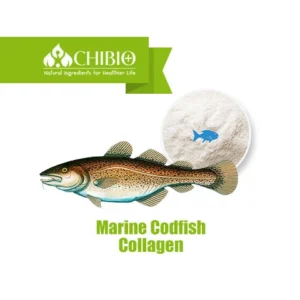Hyaluronic Acid/Sodium Hyaluronate
Hyaluronic Acid/Sodium Hyaluronate
Additional information
Product Details

Sodium Hyaluronate is the sodium salt of Hyaluronic Acid, a glycosaminoglycan consisting of D-glucuronic acid and N-acetyl-D-glucosamine disaccharide units. It exists naturally in humans and animals, and is found in high concentrations in intercellular substance, eye vitreous, umbilical cord, skin, Synovial fluid and rooster/cock comb, and many other soft connective tissues.
Our Hyaluronic Acid source is from non-animal materials:Tremella,Streptococcus zooepidemicus,Sweet Potato. Sweet potatoes have the additional advantage of having high levels of magnesium. The mineral magnesium is essential for the synthesis of hyaluronic acid in the body.

The bacteria used for the fermentation is non-GMO and non-hemolytic. Fermentation takes place in a plant-based growth medium without any animal products or byproducts. Sustainable, 100% Vegan and Vegetarian.
Sodium Hyaluronate is a advanced biological product with a wide range of molecular weights from thousands up to millions Dalton. We could provide molecular weight 3,000-2,000,000Da for your different applicaitons.
Its water solution has a very high moisture retention, viscoelasticity and lubricity. It can be widely used in cosmetics, pharmaceuticals, health food and other industries.
Difference between high and low molecular weight:
It is very important to note that there are two types of hyaluronic acid available to cosmetic formulators – HIGH MOLECULAR WEIGHT (the most common), and LOW MOLECULAR WEIGHT Hyaluronic Acid.
Most cosmetic manufacturers make use of high molecular weight HA. This ingredient, when used at optimal levels of inclusion, is an incredibly effective moisture-binding element, providing superficial hydration of the epidermis for many hours. However, this ingredient is a macro-molecule and is too large to penetrate into the deeper layers of the skin.
Low molecular weight HA, on the other hand, has been engineered to exist as a far smaller molecule that is able to penetrate through the epidermis to provide deep hydration. It has been scientifically proven that increased levels of hyaluronic acid in the deeper layers of the skin actually stimulate the production of collagen fibres, which in turn will result in a firmer, more toned appearance.


Hyaluronic Acid Specification
|
Test Item |
Specification |
|
Appearance |
White powder |
|
Solubility |
Soluble in water, practically insoluble in acetone and in anhydrous ethanol. |
|
Glucuronic Acid |
Min.44.5% |
|
Sodium Hyaluronate |
Min.92% |
|
Appearance of Solution(0.5% aq. sol., 25℃) |
A550nm≥99.0% |
|
Absorbance(0.5% aq. sol., 25℃) |
A280nm≤ 0.25 |
|
pH |
5.0-8.5 |
|
Molecular Weight |
3000Da-2.0 Million Da |
|
Protein |
Max.0.1% |
|
Loss on drying |
Max.10% |
|
Residue on Ignition |
Max.20% |
|
Chlorides |
Max.0.5% |
|
Iron |
Max.80ppm |
|
Heavy metal |
Max.20ppm |
|
Arsenic |
Max.2ppm |
|
Nitrogen |
3.0-4.0% |
|
Bacteria Count |
Max.10CFU/g |
|
Molds & Yeast |
Max.10CFU/g |
|
Staphylococcus aureus |
Negative |
|
Pseudomonas aeruginosa |
Negative |
|
Hemolysis |
Negative |
|
Viable Hemolytical Streptococci |
Negative |
Hyaluronic Acid Applicaitons & Benefits
Hyaluronic Acid as a function of raw material is widely used in cosmetics in following aspects:
1. Moisturizing and film-forming properties
2. Anti-Wrinkles
3. Anti-Irritation
4. Nutrition delivery
5. Free radical scavenging
6. Moisture retaining,skincare water absorption

Skin care products:cream, emulsion, essence, lotion, gel, facial mask, etc.;
Beauty products: lipstick, eye shadow, foundation, etc.;
Cleansing products: facial cleanser, body wash, etc.;
Hair products: shampoo, hair conditioner, styling gel, hair restorer, etc.


HA water soluble . Usually,the high molecular weight HA 1200000 is better for moisturize,low molecular weight HA 3000-6000 is better for anti-aging in cosmetic industry.
The smaller the molecular weight, the better the skin penetration. Large molecules of hyaluronic acid can also be absorbed by the skin. The viscous macromolecular components are more suitable for making cream products, these products are also more suitable for use after the essence to play their role of moisturizing and slow-release.
Small-molecule humectants have a smaller molecular weight, less viscous, and stronger permeability, because the human epidermis has 5 layers (stratum corneum, transparent layer, granular layer, spinous cell layer, basal layer. There is no transparent layer on the face.), Each layer has its own functions and characteristics (including resistance and protection functions), the smaller the molecular weight, the deeper the penetration.
Small-molecule products can penetrate deeper. When we use skin care products, we should use small-molecule products first, and then macromolecular products.For example, First, applying a small molecule hyaluronic acid essence to the face, massage and absorb it, so that it penetrates into the basal layer to replenish hyaluronic acid. Because hyaluronic acid can naturally survive in the basal layer, it can slightly expand capillaries, increase blood circulation, improve intermediate metabolism, and promote skin nutrition. The absorption of the skin makes the skin moist, smooth, delicate, tender, and elastic, and then use the macromolecular product of lotion and cream to moisturize and lock water. Both large molecules and small molecules have their own characteristics and functions, and they are indispensable.






